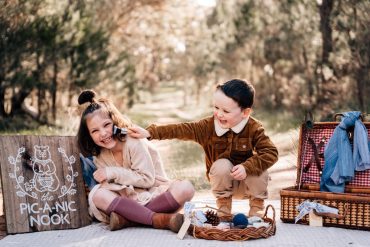Building a family rhythm
Chances are, you probably already have rhythms in place, even if you don’t think of them as such. If you have young children, your children probably go to bed roughly at the same time every evening, following loosely the same predictable pattern of activities: bath, pyjamas, snack, teeth, story, kiss, lights out. They might not do this at seven-thirty on the dot, and some nights you might read for longer than others, but you still have a rhythm in place that calms your child, provides connection, and prepares them for sleep. And even with older children, you likely have a consistent pattern of saying good night, who switches the light off, and how long they are allowed to read in bed. And this is a great place to start, as bedtime sets the tone for the whole family the next day, leaving us either tired and grumpy, or refreshed and excited to start the day.
Mornings are another good place to turn your attention to, as they can often feel chaotic.
But because they will usually share the same elements day in and day out, they can be a great place to build in more rhythm. If you have children who are still waking at night, you might find that mornings are not exactly when you’re feeling your best, and stressful mornings can feel doubly fraught because they hold a mirror up to parts of us we perhaps wish were more organised. However, even if you’re decidedly not a morning person, there are some things you can do to bring a little more ease and joy into the morning routine.
Think about first thing. How do the children wake up? If you wake them, do you do this in a way which is likely to lead to feelings of calm? Can you take a moment to lie together, sharing your dreams or talking about what you look forward to that day? If they wake up by themselves, are you ready to greet them when they do so? Then focus on your own morning routine. Getting your own morning started off right so that you can show up to your parenting duties feeling calm (this might mean gritting your teeth and setting an alarm before the children wake up) can make a huge difference.
If you have young children, create a visual chart of what needs to happen when. This can help everyone to get into the habit of getting ready on time, and also aids children in their independence, allowing them to see what needs to happen next. Finally, find small ways to weave joy into your mornings.
It might be simply setting the tone of the morning by playing beautiful music, diffusing some essential oils, reading poems over breakfast, or all playing a short game over breakfast.
Breathing in, breathing out
This is an idea which comes from the Waldorf philosophy. According to Waldorf, the breathing-in phase refers to a period of time when you are connecting with your child. This might be reading, playing together, chatting, sharing a meal, or being present with your attention while your child paints or builds. The breathing-out phase refers to a period of time when your child relates mainly to the world around them (independent free play, running around the park, writing a letter to a friend). For each breathing-in period, the child needs a breathing-out period, and so a pattern is established; breathing-in tops up the child’s connection with you and fills them up, so that they can then spend time without your full attention as you breathe out. Loosely following this pattern of ‘in breath, out breath’ in the home can help you build up regular connection with your child, and reduce feelings of stress for you both. Older children and teenagers may need less breathing in time throughout the day, but they will still need moments of connection with you. And having this pattern in mind for those moments of stress can help you build your family rhythms, as well as serving as a reminder to reach out and connect with your child when things feel tough.
Eloise Rickman is an author, parent educator, homeschooling mother, and founder of ‘A Beautiful Childhood‘. She works with clients around the world through online courses and coaching. Her work focuses on evidence-based parenting, home education, and helping families find more rhythm and ease in their daily lives. Extraordinary Parenting (Scribe, 2020) is her first book. She lives in London, UK in a sunny little house full of books with her husband and young daughter, who has been home educated from birth. You can find her on Instagram.










